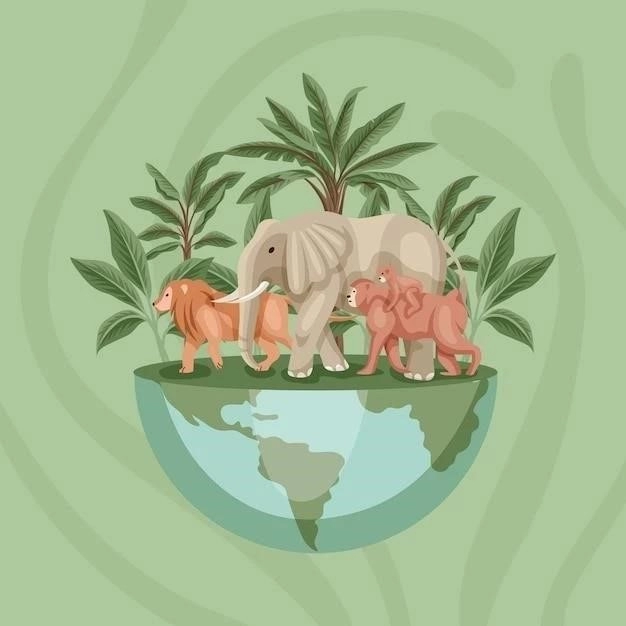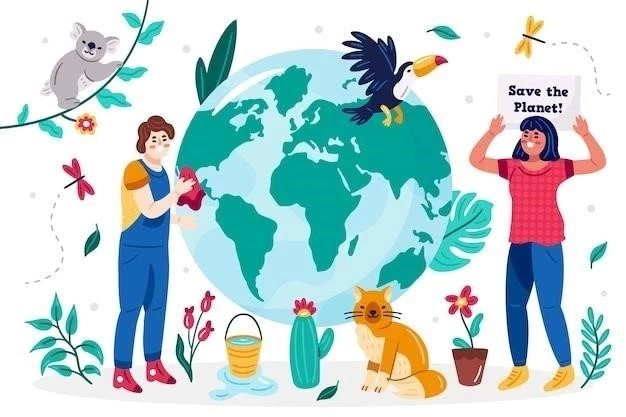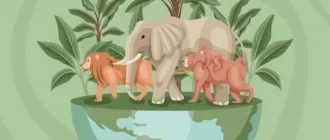As a nature enthusiast, Ive always been drawn to projects that bridge the gap between everyday people and scientific research. Thats why I was thrilled to discover the world of citizen science, particularly its impact on animal conservation. Let me tell you, its incredibly rewarding to contribute to real-world scientific studies and see firsthand how our collective efforts are making a difference.
What is Citizen Science?
In a nutshell, citizen science is the involvement of the public in scientific research. Ive participated in projects where Ive done everything from collecting data on bird sightings to identifying animals in camera trap photos. The beauty of it is that you dont need a scientific background to contribute.
My Personal Experience with Citizen Science and Animal Conservation
One project I found particularly impactful was a local initiative to monitor the nesting success of osprey. I signed up online, received training materials, and was assigned a specific nesting site to monitor. Over several weeks, I diligently observed the nest and recorded data on the ospreys behavior, the number of eggs laid, and the number of chicks that successfully fledged. It was fascinating to witness the nesting cycle up close and contribute valuable data to a larger study on osprey populations.
Another memorable experience involved identifying animals in camera trap photos for a wildlife conservation organization. I spent hours scrutinizing images captured in remote forests, identifying species ranging from deer and bobcats to the occasional elusive mountain lion. Knowing that my contributions were helping researchers track animal movements and monitor populations filled me with a sense of purpose.
The Benefits of Citizen Science for Animal Conservation
Citizen science plays a vital role in animal conservation efforts. Here are a few key benefits⁚
- Increased Data Collection⁚ Citizen scientists vastly expand the geographical reach and data collection capacity of researchers, enabling them to gather information on a scale that would be impossible otherwise.
- Cost-Effectiveness⁚ Engaging volunteers significantly reduces the costs associated with large-scale data collection and analysis, freeing up resources for other conservation initiatives.
- Public Engagement⁚ Participating in citizen science projects fosters a sense of ownership and responsibility among the public, inspiring people to become stewards of the environment.

Examples of Successful Citizen Science Projects in Animal Conservation
Numerous citizen science projects have made significant contributions to animal conservation. Here are a few notable examples⁚
- eBird⁚ This global platform allows birdwatchers to submit their observations, contributing to a massive database used by scientists to track bird populations, understand migration patterns, and inform conservation strategies.
- Zooniverse⁚ This online platform hosts a wide range of citizen science projects, including several focused on animal conservation. Volunteers can participate in tasks such as identifying animals in camera trap photos, classifying whale calls, and transcribing field notes.
- Christmas Bird Count⁚ This annual event, organized by the Audubon Society, engages thousands of volunteers across North America to count birds during the holiday season. The data collected provides valuable insights into long-term trends in bird populations.

Getting Involved in Citizen Science
If youre passionate about animals and want to make a tangible difference, I highly encourage you to explore the world of citizen science. There are countless opportunities to contribute, regardless of your location, interests, or experience level. Start by checking out online platforms like Zooniverse or CitizenScience.gov, or reach out to local conservation organizations to inquire about volunteer opportunities.
Citizen science is a powerful tool for animal conservation, empowering individuals to contribute to real-world scientific research and make a lasting impact on the planet. Its an incredibly rewarding experience, and I encourage everyone to consider joining the ranks of citizen scientists around the world.
One of the most rewarding projects I joined was through a local wildlife rehabilitation center. They were tracking the migration patterns of Monarch butterflies, and needed volunteers to tag and release them. I learned how to gently capture the butterflies in nets, carefully attach a tiny identification tag to their wing, and record data like location and date. Then, with a mix of excitement and awe, Id release them to continue their journey south. Knowing I was playing even a small part in understanding and protecting these incredible creatures was truly special.
Another project I participated in focused on identifying and mapping invasive plant species in my area. Armed with a field guide and a GPS unit, I spent several weekends hiking through local parks and nature preserves, carefully documenting the location and extent of invasive plants. It was eye-opening to realize how these invaders can outcompete native species, and the data I collected was used to inform local conservation efforts. I even organized a small group of friends to help with the removal of some of these invasive plants, making a tangible difference in our local ecosystem.
Citizen science has not only deepened my connection to the natural world, but it has also introduced me to a wonderful community of like-minded individuals. Ive met passionate scientists, dedicated conservationists, and fellow nature enthusiasts through these projects, forging friendships and learning from their experiences. Its incredibly inspiring to be part of a collective effort to understand and protect our planets biodiversity.
One particularly memorable experience involved tracking the elusive snowshoe hare in our local mountains. I joined a research team from a nearby university who were studying how climate change was impacting the hares ability to camouflage during the increasingly shorter winters. We were trained to identify tracks in the snow and set up camera traps in areas where hare activity was suspected. I remember the thrill of checking the memory cards from the cameras and discovering we had captured footage of these masters of disguise! Analyzing the photos and videos, noting coat color variations and timing of molts, made me feel like a real scientist contributing to important research.
Ive also become an avid user of the eBird app, logging my bird sightings whenever Im out hiking or even just in my own backyard. Its fascinating to see the real-time data of bird movements and distributions, and knowing that my observations are contributing to this vast database used by scientists around the world is incredibly rewarding. I even convinced my family to participate in the annual Christmas Bird Count, turning our holiday tradition into a fun and meaningful way to contribute to citizen science.
Through my experiences, Ive learned that citizen science is more than just collecting data; its about fostering a deeper connection to the natural world and inspiring others to become active participants in conservation efforts. Ive made it a point to share my passion with friends and family, encouraging them to download nature apps, participate in local bioblitzes, or simply observe and appreciate the biodiversity around them. Together, we can all make a difference in protecting our planets amazing creatures.
One of the most rewarding projects I joined was through a local wildlife rehabilitation center. They were tracking the migration patterns of Monarch butterflies, and needed volunteers to tag and release them. I learned how to gently capture the butterflies in nets, carefully attach a tiny identification tag to their wing, and record data like location and date. Then, with a mix of excitement and awe, Id release them to continue their journey south. Knowing I was playing even a small part in understanding and protecting these incredible creatures was truly special.
Another project I participated in focused on identifying and mapping invasive plant species in my area. Armed with a field guide and a GPS unit, I spent several weekends hiking through local parks and nature preserves, carefully documenting the location and extent of invasive plants. It was eye-opening to realize how these invaders can outcompete native species, and the data I collected was used to inform local conservation efforts. I even organized a small group of friends to help with the removal of some of these invasive plants, making a tangible difference in our local ecosystem.
Citizen science has not only deepened my connection to the natural world, but it has also introduced me to a wonderful community of like-minded individuals. Ive met passionate scientists, dedicated conservationists, and fellow nature enthusiasts through these projects, forging friendships and learning from their experiences. Its incredibly inspiring to be part of a collective effort to understand and protect our planets biodiversity.
One particularly memorable experience involved tracking the elusive snowshoe hare in our local mountains. I joined a research team from a nearby university who were studying how climate change was impacting the hares ability to camouflage during the increasingly shorter winters. We were trained to identify tracks in the snow and set up camera traps in areas where hare activity was suspected. I remember the thrill of checking the memory cards from the cameras and discovering we had captured footage of these masters of disguise! Analyzing the photos and videos, noting coat color variations and timing of molts, made me feel like a real scientist contributing to important research.
Ive also become an avid user of the eBird app, logging my bird sightings whenever Im out hiking or even just in my own backyard. Its fascinating to see the real-time data of bird movements and distributions, and knowing that my observations are contributing to this vast database used by scientists around the world is incredibly rewarding. I even convinced my family to participate in the annual Christmas Bird Count, turning our holiday tradition into a fun and meaningful way to contribute to citizen science.
Through my experiences, Ive learned that citizen science is more than just collecting data; its about fostering a deeper connection to the natural world and inspiring others to become active participants in conservation efforts. Ive made it a point to share my passion with friends and family, encouraging them to download nature apps, participate in local bioblitzes, or simply observe and appreciate the biodiversity around them. Together, we can all make a difference in protecting our planets amazing creatures;











As a parent, I\
Citizen science has opened my eyes to the interconnectedness of all living things. By studying and protecting wildlife, we\
Citizen science has taught me the importance of observation, patience, and attention to detail. These skills have not only enhanced my scientific literacy but have also enriched my overall appreciation for the natural world.
The hands-on nature of citizen science is what truly sets it apart. It\
Citizen science has shown me that anyone can be a scientist, regardless of their age, background, or education level. All it takes is a curious mind, a willingness to learn, and a passion for making a difference.
I\
Citizen science has not only deepened my connection with nature but has also inspired me to become a more vocal advocate for animal conservation. I find myself sharing my experiences with friends and family, encouraging them to get involved and make a difference.
One of the most rewarding aspects of participating in citizen science is seeing the direct impact of my contributions. Whether it\
Citizen science has given me a renewed sense of hope for the future of our planet. It\
The sense of community within the citizen science world is truly special. I\
The learning opportunities in citizen science are endless. I\
The beauty of citizen science is that it breaks down the barriers between scientists and the public. It allows us to become active participants in the scientific process, contributing to real-world solutions for animal conservation.
As someone with a busy schedule, I appreciate the flexibility that citizen science offers. I can contribute to projects at my own pace and from the comfort of my own home. Whether it\